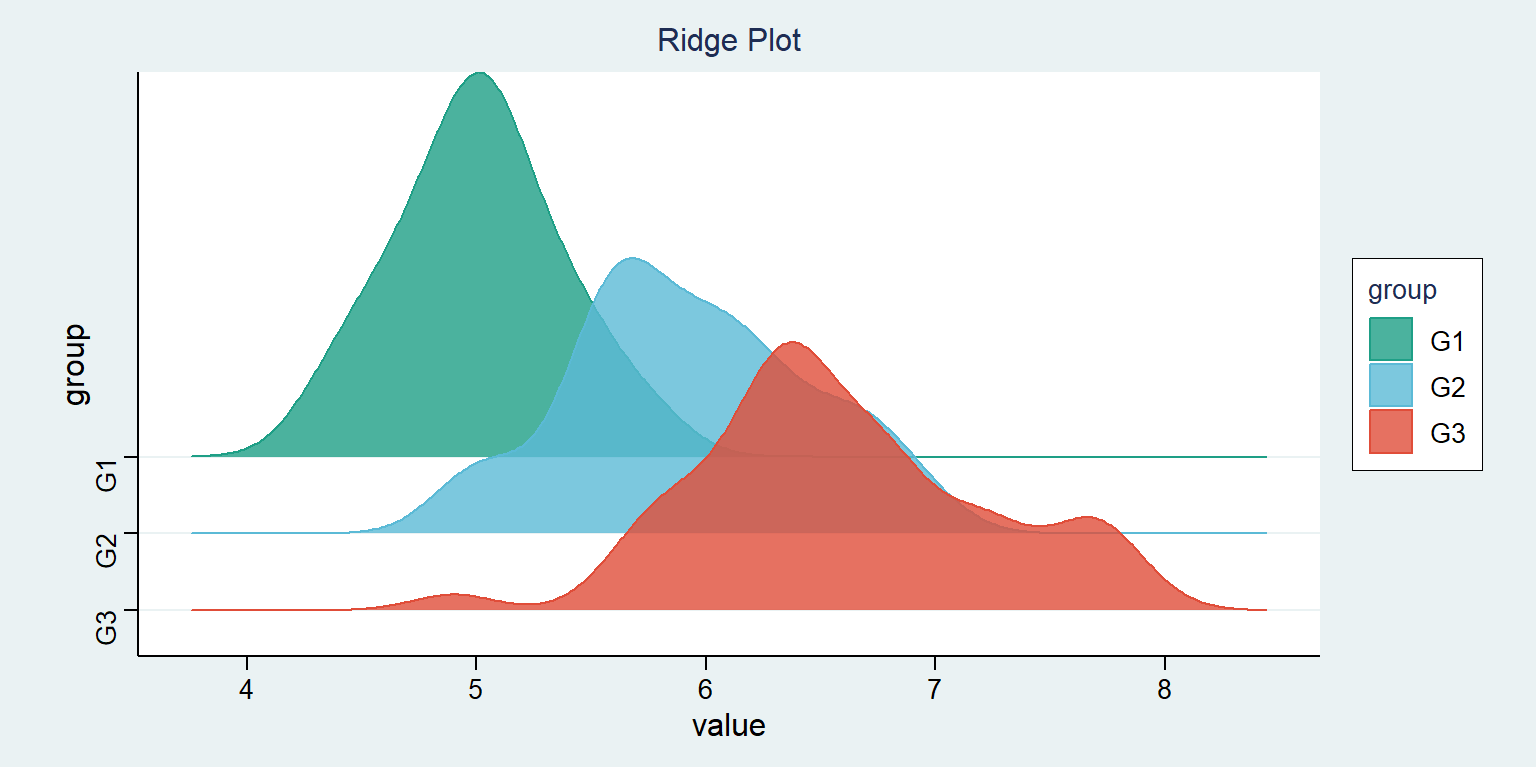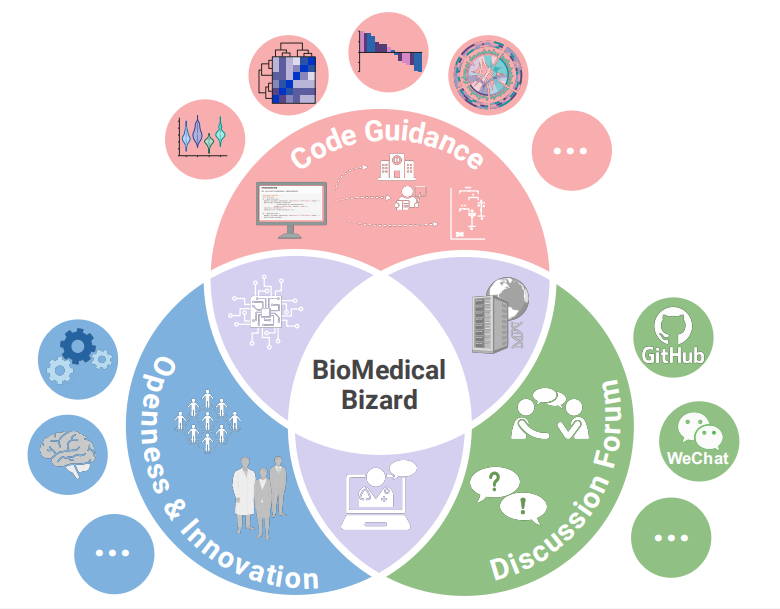# Install packages
if (!requireNamespace("ggridges", quietly = TRUE)) {
install.packages("ggridges")
}
if (!requireNamespace("ggplot2", quietly = TRUE)) {
install.packages("ggplot2")
}
if (!requireNamespace("ggthemes", quietly = TRUE)) {
install.packages("ggthemes")
}
# Load packages
library(ggridges)
library(ggplot2)
library(ggthemes)Ridge
Note
Hiplot website
This page is the tutorial for source code version of the Hiplot Ridge plugin. You can also use the Hiplot website to achieve no code ploting. For more information please see the following link:
The ridge map is a graph that connects points and forms a ridge.
Setup
System Requirements: Cross-platform (Linux/MacOS/Windows)
Programming language: R
Dependent packages:
ggridges;ggplot2;ggthemes
Data Preparation
The loaded data are three groups and their corresponding values.
# Load data
data <- read.delim("files/Hiplot/154-ridge-data.txt", header = T)
# Convert data structure
data$group <- factor(data$group, levels = unique(data$group)[length(unique(data$group)):1])
# View data
head(data) value group
1 5.1 G1
2 4.9 G1
3 4.7 G1
4 4.6 G1
5 5.0 G1
6 5.4 G1Visualization
# Ridge
p <- ggplot(data, aes(x = value, y = group, fill = group, col = group)) +
geom_density_ridges(scale = 5, alpha = 0.8) +
labs(x = "value", y = "group") +
theme(plot.title = element_text(hjust = 0.5),
legend.position = "none") +
ggtitle("Ridge Plot") +
guides(color = guide_legend(reverse = TRUE),
fill = guide_legend(reverse = TRUE)) +
scale_fill_manual(values = c("#e04d39","#5bbad6","#1e9f86")) +
scale_color_manual(values = c("#e04d39","#5bbad6","#1e9f86")) +
theme_stata() +
theme(text = element_text(family = "Arial"),
plot.title = element_text(size = 12,hjust = 0.5),
axis.title = element_text(size = 12),
axis.text = element_text(size = 10),
axis.text.x = element_text(angle = 0, hjust = 0.5,vjust = 1),
legend.position = "right",
legend.direction = "vertical",
legend.title = element_text(size = 10),
legend.text = element_text(size = 10))
p
Different colors represent different groups, and the approximate degree of data can be observed.
